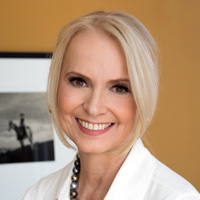The Bodacious Benefits of a Donor Advised Fund
From a bevy tax breaks to the opportunity to involve family members and future generations in a legacy of giving, donor advised funds add leverage and flexibility to a comprehensive financial plan.


Since 1931, donor advised funds have been offered by local community foundations and more recently have become available through broker-sponsored charitable gift funds. They are something akin to a marriage between a private foundation and a mutual fund.
Donor advised funds allow people to establish separately identified accounts at a charity and then direct how the charity should use that money. Establishing a fund is like investing in a mutual fund, because each donor’s assets are pooled together into a common account owned, maintained and managed by the charity.
One of the main benefits of a donor advised fund is that it allows individuals with philanthropic intent to have their charitable assets professionally managed and distributed to desired causes at a fraction of the cost of a private foundation. But, lower cost is only one of many benefits. Donor advised funds also offer a number of creative financial planning opportunities.
From just $107.88 $24.99 for Kiplinger Personal Finance
Become a smarter, better informed investor. Subscribe from just $107.88 $24.99, plus get up to 4 Special Issues

Sign up for Kiplinger’s Free Newsletters
Profit and prosper with the best of expert advice on investing, taxes, retirement, personal finance and more - straight to your e-mail.
Profit and prosper with the best of expert advice - straight to your e-mail.
Chief among these is their tax deductibility. Contributions to a donor advised fund are tax deductible in the year they are made. And, the limit on deductibility is huge. One can donate up to 60% of adjusted gross income (AGI). This creates a meaningful planning opportunity in years where one has a windfall that creates a big bump up in taxable income. Adding to one’s donor advised fund can help mitigate the tax burden of that one-time event.
The tax deductibility of contributions made to a donor advised fund can also be leveraged. This leverage is achieved by contributing highly appreciated assets. The deduction on low-cost-basis property contributed to a fund is determined by its current value, not its cost. So, the donor receives a double benefit: a larger deduction and no capital gain on the property’s appreciation.
Even though the deduction limit on property is lower than cash (30% of AGI), most community foundations and broker-sponsored charitable gift funds offer great flexibility regarding the types of property that can be donated. For example, many charities allow fund holders to donate an interest in a privately held business, the cash value of whole-life insurance policies, artwork, collectibles, automobiles, livestock and even Bitcoin.
Donor advised funds also provide great estate-planning opportunities. Assets contributed permanently leave one’s estate, so they aren’t subject to estate taxes. With the lifetime exclusion currently at over $11 million, this offers families lots of flexibility to use a donor advised fund in their planning. Donors can also use their annual gift tax exclusion to make contributions to their fund. This means that a married couple can each contribute up to $15,000 — for a total of $30,000 — every year. And, since assets in a donor advised fund are allowed to grow tax-free, they can create a lasting legacy.
For families with charitable intent and a desire to pass that value onto future generations, a donor advised fund provides the opportunity for children and grandchildren to be involved in the decision-making process.
As its name implies, a donor advised fund gives the donor the ability to advise the charity on how to use the money in the fund. Involving children in this process teaches them that they can effect change to improve and strengthen their local community, support the arts, raise educational standards, fight disease or provide relief to victims of war or natural disasters. It can also prepare them to take the helm in adulthood. A well-funded donor advised fund often will outlive its benefactor. As a result, the donor’s heirs will be able to direct gifts during their lifetimes as well. So, while contributions made to a donor advised fund provide an immediate benefit in the form of a current year tax deduction, they can also provide long-term gifting opportunities that last for more than one generation.
In terms of comprehensive financial planning there are few strategies that provide the many and varied opportunities that one gets from a donor advised fund. Not many charitable vehicles provide the same funding flexibility regarding the types of assets that can be donated. Fewer offer the donor the ability to be involved in how their contributions are used. And, still fewer provide the context to help teach heirs the value of philanthropy.
As a result, the donor advised fund is a remarkably useful tool to help carry out one’s charitable intent as a component of his or her unique financial planning objectives. In many cases, including a donor advised fund as part of a comprehensive financial plan can provide both leverage and flexibility to help an investor achieve long-term, goals-based investment outcomes.
Profit and prosper with the best of Kiplinger's advice on investing, taxes, retirement, personal finance and much more. Delivered daily. Enter your email in the box and click Sign Me Up.

I'm the CEO of Better Money Decisions (B$D) and co-author of the blog Better Financial Decisions. As a principal of B$D, I'm excited to continue my long career as an investment professional. Living and working in places as diverse as Saudi Arabia and Budapest, Hungary, has given me a unique perspective on the world of investing. My book, "Bozos, Monsters and Whiz-Bangs: Bad Advice from Financial Advisors and How to Avoid It!" is an insider's guide to finding the right adviser.
-
 Nasdaq Sinks 418 Points as Tech Chills: Stock Market Today
Nasdaq Sinks 418 Points as Tech Chills: Stock Market TodayInvestors, traders and speculators are growing cooler to the AI revolution as winter approaches.
-
 23 Last-Minute Gifts That Still Arrive Before Christmas
23 Last-Minute Gifts That Still Arrive Before ChristmasScrambling to cross those last few names off your list? Here are 23 last-minute gifts that you can still get in time for Christmas.
-
 The Rule of Compounding: Why Time Is an Investor's Best Friend
The Rule of Compounding: Why Time Is an Investor's Best FriendDescribed as both a "miracle" and a "wonder," compound interest is simply a function of time.
-
 If You're a U.S. Retiree Living in Portugal, Your Tax Plan Needs a Post-NHR Strategy ASAP
If You're a U.S. Retiree Living in Portugal, Your Tax Plan Needs a Post-NHR Strategy ASAPWhen your 10-year Non-Habitual Resident tax break ends, you could see your tax rate soar. Take steps to plan for this change well before the NHR window closes.
-
 Could Target-Date Funds With Built-In Income Guarantees Be the Next Evolution in Retirement Planning?
Could Target-Date Funds With Built-In Income Guarantees Be the Next Evolution in Retirement Planning?With target-date funds falling short on income certainty, retirement plans should integrate guaranteed income solutions. Here is what participants can do.
-
 Your Year-End Tax and Estate Planning Review Just Got Urgent
Your Year-End Tax and Estate Planning Review Just Got UrgentChanging tax rules and falling interest rates mean financial planning is more important than ever as 2025 ends. There's still time to make these five key moves.
-
 What Makes This Business So Successful? We Find Out From the Founder's Kids
What Makes This Business So Successful? We Find Out From the Founder's KidsThe children of Morgan Clayton share how their father's wisdom, life experience and caring nature have turned their family business into a respected powerhouse.
-
 Past Performance Is Not Indicative of Your Financial Adviser's Expertise
Past Performance Is Not Indicative of Your Financial Adviser's ExpertiseMany people find a financial adviser by searching online or asking for referrals from friends or family. This can actually end up costing you big-time.
-
 I'm a Financial Planner: If You're Not Doing Roth Conversions, You Need to Read This
I'm a Financial Planner: If You're Not Doing Roth Conversions, You Need to Read ThisRoth conversions and other Roth strategies can be complex, but don't dismiss these tax planning tools outright. They could really work for you and your heirs.
-
 Could Traditional Retirement Expectations Be Killing Us? A Retirement Psychologist Makes the Case
Could Traditional Retirement Expectations Be Killing Us? A Retirement Psychologist Makes the CaseA retirement psychologist makes the case: A fulfilling retirement begins with a blueprint for living, rather than simply the accumulation of a large nest egg.
-
 I'm a Financial Adviser: This Is How You Can Adapt to Social Security Uncertainty
I'm a Financial Adviser: This Is How You Can Adapt to Social Security UncertaintyRather than letting the unknowns make you anxious, focus on building a flexible income strategy that can adapt to possible future Social Security changes.